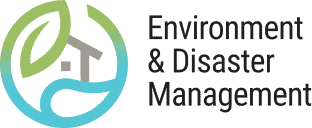On April 25, 2015 a magnitude 7.8 earthquake struck Nepal causing significant damage and loss of life. The devastating earthquake caused a series of aftershocks (several severe), triggered avalanches and many landslides, and affected 31 districts, 14 acutely. More than 8,700 people died and more than 22,300 people were injured as a result of the earthquake and more than 500,000 buildings were destroyed. [1] The estimated value of damages and loss was over USD 7 billion. [2]
Recovery and reconstruction can be a long process—cities, towns, and communities are usually not created or rebuilt overnight. In Nepal, many communities, government agencies, civil society organizations, private sector and donors are working together to integrate sound environmental approaches in to reconstruction for a more resilient Nepal.
Following the Post Disaster Needs Assessment (PDNA) the Ministry of Science, Technology and Environment (MoSTE) led a Rapid Environmental Assessment (REA), the first of its kind in Nepal. The PDNA and REA provided a foundation for building back in way that is safer, more environmentally responsible and resilient, including a set of ten principles for green recovery and reconstruction.
To support the implementation of the recommendations made in the REA over 30 green recovery and reconstruction (GRR) training courses and workshops were held and over 1,000 individuals were trained, including engineers in the Department of Urban Development and Building Construction (DUDBC) and the water and sanitation sector; District Disaster Relief Committees; Members of Parliament; humanitarian and environmental non-government organization staff; mason trainers; and the media. Soil bioengineering good practice demonstration sites were established in some of the worst affected districts, to stabilize landslide sites.
Additionally, a number of resources were developed to support ongoing recovery and reconstruction activities, including:
1. Building Material Selection and Use: An Environmental Guide
2. Water, Sanitation and Hygiene (WASH) Environmental Considerations
3. Post-Disaster Shelter and Housing
4. Guidance Note: Environment in the Emergency Education Response (by the Nepal Education Cluster
5. Nepal Earthquake 2015: Environmental Considerations for Food Security
On the two-year anniversary of the Nepal Earthquake, Nepal has made significant progress in pursuing environmentally responsible recovery approaches that will ensure they build back safer and greener to increase resilience and reduce the risk from future disasters.
For more information visit the Hariyo Ban Program.
Sources:
Nepal Earthquake 2015: Building Back Better, Safer and Greener for a More Resilient Nepal
